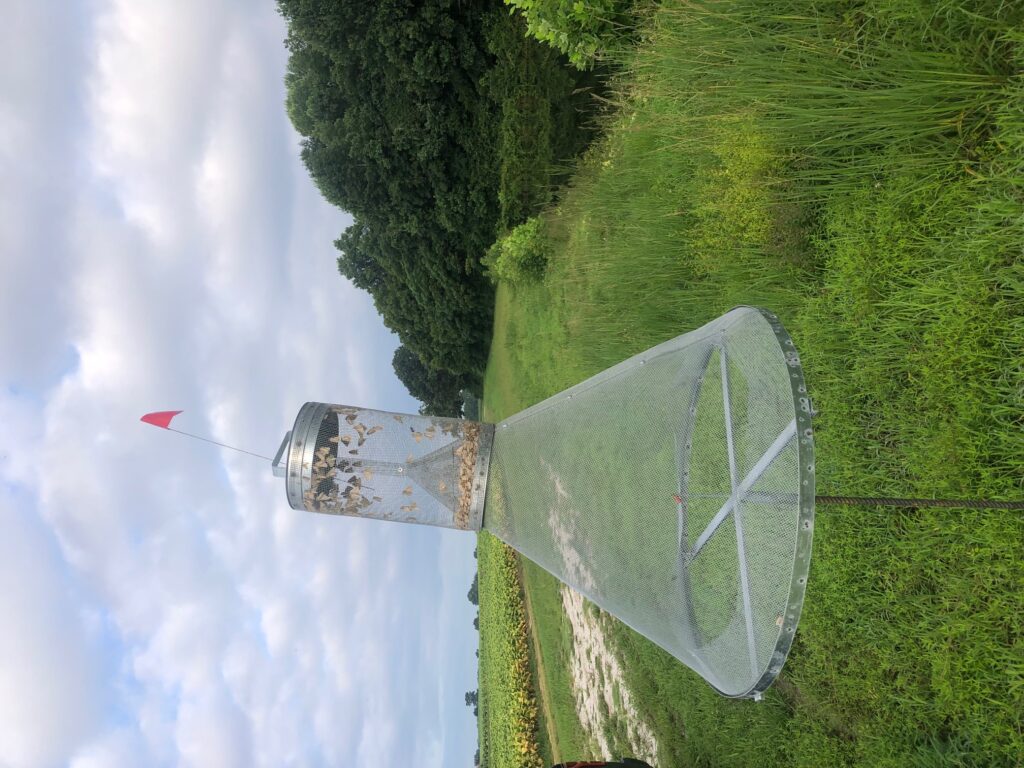Bollworm Populations on the Decline With Another Generation on the Way
go.ncsu.edu/readext?1017601
en Español / em Português
El inglés es el idioma de control de esta página. En la medida en que haya algún conflicto entre la traducción al inglés y la traducción, el inglés prevalece.
Al hacer clic en el enlace de traducción se activa un servicio de traducción gratuito para convertir la página al español. Al igual que con cualquier traducción por Internet, la conversión no es sensible al contexto y puede que no traduzca el texto en su significado original. NC State Extension no garantiza la exactitud del texto traducido. Por favor, tenga en cuenta que algunas aplicaciones y/o servicios pueden no funcionar como se espera cuando se traducen.
Português
Inglês é o idioma de controle desta página. Na medida que haja algum conflito entre o texto original em Inglês e a tradução, o Inglês prevalece.
Ao clicar no link de tradução, um serviço gratuito de tradução será ativado para converter a página para o Português. Como em qualquer tradução pela internet, a conversão não é sensivel ao contexto e pode não ocorrer a tradução para o significado orginal. O serviço de Extensão da Carolina do Norte (NC State Extension) não garante a exatidão do texto traduzido. Por favor, observe que algumas funções ou serviços podem não funcionar como esperado após a tradução.
English
English is the controlling language of this page. To the extent there is any conflict between the English text and the translation, English controls.
Clicking on the translation link activates a free translation service to convert the page to Spanish. As with any Internet translation, the conversion is not context-sensitive and may not translate the text to its original meaning. NC State Extension does not guarantee the accuracy of the translated text. Please note that some applications and/or services may not function as expected when translated.
Collapse ▲As we enter early August, we continue to track bollworm populations across the state. Extension personnel across the state have been monitoring insect pests using black lights and pheromone traps for several weeks. Activity data from the Black Light Trap Network shows that populations are, on average, declining relative to peak flights over the past two weeks. However, some locations have increasing counts which suggests that generations are overlapping and/or environmental conditions are contributing to variable development rates.
It will be important to continue monitoring populations because another generation could still impact susceptible cotton, soybeans, and specialty crops in a few weeks.
Find current trap data here.
Practical bollworm management for the remaining season
Bollworms have been a persistent pest of cotton over the last few years, a trend that has been driven by increasing resistance to Bt toxins used in cotton and corn. While 3 toxin cotton (Bollgard 3, TwinLink Plus, and WideStrike 3) provides good protection from caterpillar pests, it is important to continue scouting the crop to ensure unexpected injury does not occur. In a previous article, we cover thresholds needed for bollworm management in 2021 depending on the type of Bt expressed in the variety (article link: Additional Threshold for Bollworm).



